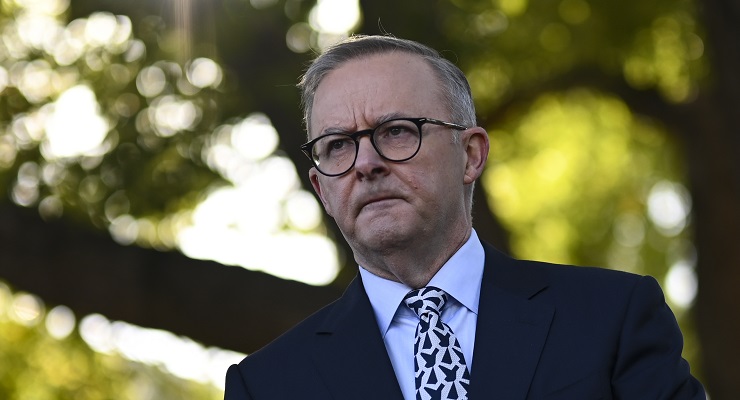
Three days to go. Finally, Labor’s deceptively comfortable-looking lead in the opinion polls has started to narrow in the final days, even though around 15% of eligible voters have already cast their ballots early.
All this means is we’re in for a long night this Saturday, with the result turning on a handful of key marginal seats. Here is where the election will be won and lost:
Labor targets
These are some of the Coalition’s most marginal seats, and if Labor doesn’t win them, forming government will be a real struggle. Both parties have poured resources into Bass in Northern Tasmania (Lib +0.4%), the government’s tightest.
Labor would hope to pick up the Sydney seat of Reid (Lib +3.2%), especially after Liberal MP Fiona Martin’s shocker last week. Boothby, in Adelaide, has been held by the Liberals since the 1940s, but with a 1.4% margin, and local member Nicolle Flint retiring, Labor is quietly confident.
In Melbourne’s eastern suburbs, ultra-marginal Chisholm (Lib +0.5%) has been hard fought by both sides. Labor is also eyeing gains over in Western Australia, with Swan (Lib + 3.2%) and Pearce (Lib + 5.2%) the most likely.
Heading further up the target list, Labor has been eyeing off Robertson on the NSW Central Coast (Lib +4.2%). Last week’s YouGov seat-by-seat poll had that as an opposition gain, along with the blue-ribbon Melbourne seat of Higgins (Lib +3.7%), where Labor is growing optimistic. There’s also a sense of momentum in Bennelong, held on a 6.9% margin, where popular local MP John Alexander is retiring.
Braddon in Northern Tasmania (Lib + 3.1%) should be a Labor target, but voters in that part of the country have been notoriously chaotic. And if there is a big swing on in the West, Labor could unseat the Minister for Indigenous Australians Ken Wyatt in Hasluck (Lib + 5.9%).
What’s missing from this picture is Queensland, where Labor was battered so hard in 2019 that some strategists on both sides concede no seats could change hands. Labor’s most likely gains could be leafier urban seats like Brisbane (LNP + 4.9%) and Ryan (LNP + 6.0%). The Coalition’s most marginal Queensland seat is Longman in Brisbane’s outer suburbs, held on a 3.3% margin. If all goes very well for Labor, the Far North Queensland seat of Leichhardt (LNP + 4.2%) could be in play. Flynn, in Central Queensland coal country is an even longer shot on 8.7%.
The Coalition targets
Today, Prime Minister Scott Morrison visited the Geelong seat of Corangamite (Lab + 1.0%) for the third time this campaign. It’s an electorate that’s key to Morrison’s strategy of targeting electorates in outer suburbs and regional centres to offset projected losses elsewhere.
Parramatta, in Sydney’s west, has also gotten plenty of attention, and the combination of a 3.5% margin, and controversy around Labor’s captain’s pick Andrew Charlton, a white eastern suburbs blow-in, could give the Liberals a leg-up.
The government hopes the Andrew Constance factor could help them win Gilmore (Lab + 2.6%) on the NSW South Coast. And both Morrison and Deputy Prime Minister Barnaby Joyce have been targeting the vast Northern Territory seat of Lingiari (Lab + 5.5%).
Some in the Labor camp have been getting a little antsy about Lyons in Tasmania, held on a 5.2% margin. The Liberals have also talked up their chances in outer-Melbourne suburban seats of McEwen (Lab 5.3%) and Hawke (notionally Labor), with a bit of help from an anti-Dan Andrews backlash and United Australia Party primary votes.
Then there’s coal country. Joyce has largely been tasked with targeting Hunter (Lab 3%). The other structural problem for Labor is it has four times as many seats on a margin of under 3% than the Liberals. Places like Cowan in WA, Blair, Lilley and Moreton in Queensland, and Greenway and Eden-Monaro in NSW have all flown under the radar this election, but could be vulnerable.
The teal threat
One of the biggest election wildcards is the teal independents, threatening the Liberals in parts of their traditional heartland. There’s a broad view across the spectrum that at least one or two could win, but no consensus about who and where.
The biggest shock would be Treasurer Josh Frydenberg losing Kooyong to Monique Ryan (Lib + 6.4%). Staying in Melbourne, the fight between Zoe Daniel and Liberal backbencher Tim Wilson for Goldstein (Lib + 7.8%) will be tight.
Despite a 9.3% margin, Trent Zimmerman faces a three-way battle with Labor’s Catherine Renshaw and independent Kylea Tink in North Sydney. Dave Sharma is struggling to hold off Allegra Spender in Wentworth, where he got a 1.3% margin over another independent, Kerryn Phelps, last time. Mackellar on the Northern Beaches (Lib 13.2%) could be close.
And in WA, latest polling gives Kate Chaney a real shot at winning Julie Bishop’s old seat of Curtin (Lib +13.2%).








I am in Leichhardt in Far North Queensland where almost no-one has ever seen the sitting , LNP Warren Entsch. There seems to be a fear among journalists to predict swings after 2019, which is regrettable, This large electorate, heavily dependent on tourism, took a hammering and we are deeply unimpressed with how Queensland victims of floods in no way been assisted by the LNP and their mysterious ‘Disaster Fund’ which we believe is used for keeping the LNP in power.
One issue which could have a big effect on the election is how voters preference candidates and whether most will take the trouble to work out how to do it. I am in Kooyong and it took some thinking, some research and quite a bit of time to work out what some of the 10 parties and one independent stand for and then how to order them to get the outcome I want. Most people won’t be that interested, yet their vote could have unintentional consequences if they wish to vote for Monique Ryan, the teal independent who, unlike Frydenberg has left preferencing up to individual voters.
To nitpick, all lower house preferencing is up to the individual voter. Parties may issue how to vote cards but they do not control how your vote gets preferenced. Number all the boxes
Yes but, sadly, too many people blindly follow How to Vote cards. If it were up to me, I’d ban HtV cards altogether.
I know that. What I am saying is that if you want your vote to go where you want it to go, you have be informed enough to order your preferences to make this happen, especially if you don’t know what some of the parties stand for.
That won’t necessarily stop people voting for the independent, then for the parties they’re aware of, then randomly numbering the strangers at the end. Not that difficult.
Kishor, not even an allusion to Greens possibilities?
Higgins? Macnamara? Ryan? Brisbane?
It seems that you, like the entire MSM and most other journalists, have forgotten that this is Australia’s #3 political party.
If Monique Ryan comes first or second on primaries, her preferences won’t be counted. I have been stunned in recent weeks to learn how little this basic fact is understood.
All preferencing is “up to individual voters”. A how-to-vote card is a recommendation: no more, no less.
It is just that if it is very close, preferences will matter.
And Monique Ryan isn’t preferencing, so one has to work out which parties will give their preferences to her. In some cases it is clearcut, eg Labor and the Greens, and Clive Palmer and One Nation, at different ends of the spectrum and that number of preferences may be enough for either Ryan or Frydenberg.
If you vote for Ryan or Frydenberg, your preferences won’t matter. If you vote for someone else, all that will matter is who you preference the higher: Frydenberg or Ryan. Knowing what the other parties stand for may make your preferences more ideologically coherent, but that won’t affect the outcome.
The tragedy is that so few posters here seem to understand STV and this is a self selected (not to say self satisfied), politically engaged group who should know how our electoral system works.
Don’t start me. I have been amazed to encounter the confusion of highly educated people on this issue. One thought that the candidate who comes second is the first to have their preferences distributed. I cut people a bit of slack on the Senate voting and counting system, but less excuse re the Reps.
Friends, & their acquaintances, far more intelligent/succe$$ful than I have shown, by word & deed that they not only have not a clue about the electoral system but DON’T CARE!
Peeps is weird.
Curmudgeon, I’m with you. Some very influential people have suggested that Green and Labor voters who want to get rid of incumbent Liberals must “put their principles aside and vote Teal”. Thus showing a fundamental misunderstanding of preferential voting. I’m now certain that in Kooyong Ryan will finish a good second on first preferences, and then thrash JF on Greens and Labor preferences.
One reservation, Barnino: Teal candidate probably needs to come second as Labor preference flow to her would exceed Teal preference flow to Labor candidate if he came second.
Agreed Curmudgeon. But that would suggest that some Teal voters are just joshing about getting rid of the incumbent! As I say, won’t matter in Kooyong.
Re Independents – Don’t forget Georgie Steele in Hughes and Rob Priestly in Nicholls.